Steve Petty wanted to build a boat. He had done it before, twice: he had built an 8′ Frugal Skiff, WE DO, as a wedding present for his son and daughter-in-law; and he’d built a 12′ Frugal Skiff with a 5-hp outboard so he could “putter around West Falmouth Harbor in Massachusetts.” But he had sold the 12-footer when he moved inland to Sherborn where there was no coast but there were many lakes and ponds. He might have built anything on a whim, but he remembered that some years earlier his daughter had said she’d like to have a good rowing boat to keep at the family camp on North Channel in Ontario. That passing comment clinched it. Steve would build a rowboat.
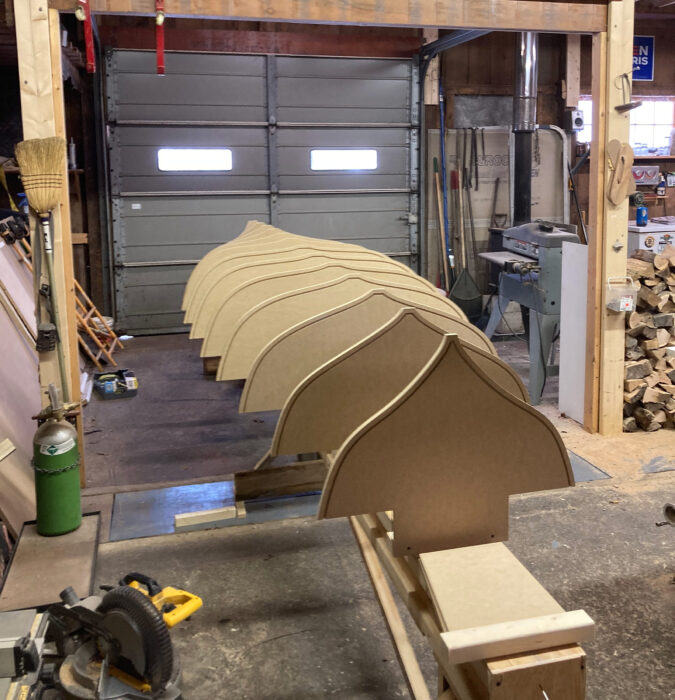 Steve Petty
Steve PettyWith so many molds set up on the strong back it’s easy to see the shape of the hull with the full ’midships sections running into a deep V both fore and aft—a combination that provides the boat with stability and good tracking.
While searching for the right project, Steve came upon an advertisement in WoodenBoat for Newfound Woodworks. He visited the website and liked what he saw—a catalog of plans and kits for “easy-to-build strip canoe, kayak, and rowing boats.” He especially liked the 15′ Rangeley Lake Boat. Steve has enjoyed fly-fishing for many years and had visited the Rangeley Lakes region in western Maine several times. Seeing the name of Newfound’s boat was enough to pique his interest.
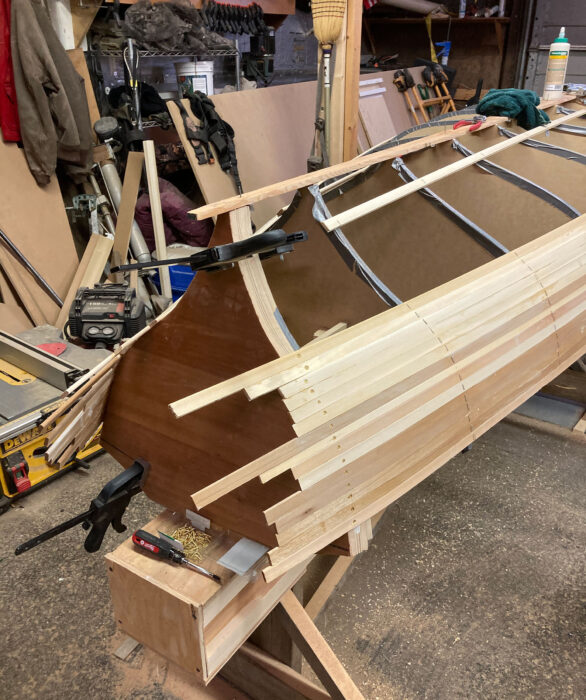 Steve Petty
Steve PettyWithin 10 days, the transom was in place and Steve was well along with the strip-planking. He had protected the molds with duct tape so that the strips would not stick to them.
Newfound Woodworks describes the Rangeley Lake Boat as “a distinctive American sporting boat that has been in use for something like 100 years, and was well known to past generations of fishermen for its numerous excellent characteristics.” Originally built of lapstrake cedar, Newfound Woodworks has adapted the design—using offsets published in John Gardner’s Building Classic Small Craft—for strip-planking with a combination of red and white cedar, as well as mahogany for the gunwales, sapele for the deck, and spruce for the coamings.
Steve was hooked. The design’s inherent stability, excellent tracking qualities, and two rowing stations made it an excellent choice for his children and grandchildren who, at the time, ranged in age from 8 to 12. He called Newfound Woodworks and ordered a kit.
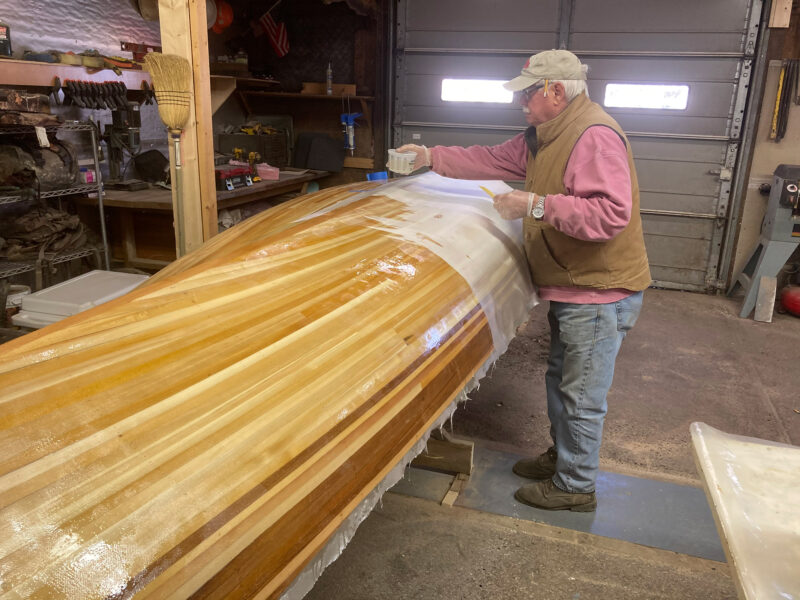 Robert Conkey
Robert ConkeyAfter the strip planking was complete and sanded fair, Steve got his first taste of fiberglassing.
Steve has always enjoyed woodworking. In high school he took shop classes and, for a while, considered becoming a teacher of industrial arts. But in the end, he says, he went into carpentry and construction, and spent almost 35 years building timber-frame homes.
While Steve says “working with wood isn’t scary,” he was new to strip-planking, so he took advice from Alan Mann and Rose Woodyard at Newfound Woodworks and purchased the Pre-Kit Rowing Package. It included a DVD on cedar-strip boatbuilding, another on applying epoxy and fiberglass, and a book, Woodstrip Rowing Craft: How to Build, Step by Step, by Susan Van Leuven. “It was terrific,” says Steve. “Between those three things…well, there wasn’t much left out!”
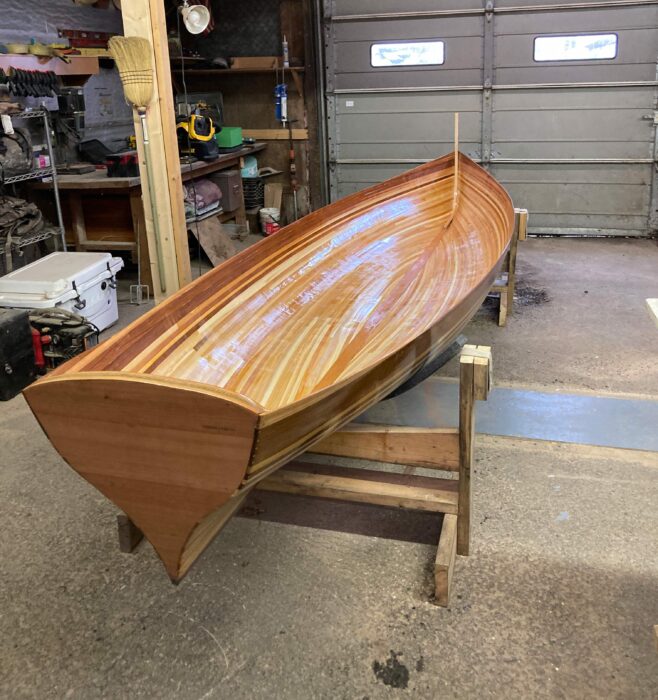 Steve Petty
Steve PettyWith the boat turned upright, Steve fiberglassed the interior.
When his kit was ready—all Newfound Woodworks kits are made to order—Steve drove up to Bristol, New Hampshire, to pick it up. “I could have had it sent, but it’s not terribly far away, and I got to meet Rose and Alan. They gave me a wonderful tour of their shop and what they do. I took another ride up partway through the build when I had some questions. And I called a couple of times—they were great to work with.”
Steve built the Rangeley in his shop, which is housed in a barn in Sherborn, Massachusetts. He shares the space with a friend, and they use the shop for “everything from playing with boats to building small pieces of furniture to larger parts of construction projects. We each do our own thing, but it’s nice to have an extra pair of hands around when you need them.”
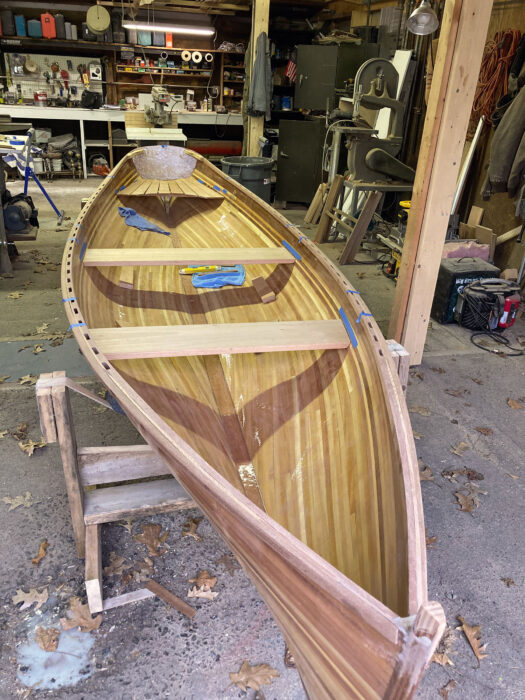 Steve Petty
Steve PettyThe thwarts and sternsheets were temporarily placed prior to installation. The inwales were milled with openings to create a slotted gunwale.
The Rangeley Lake Boat kit, says Steve, came with almost everything he needed. “You don’t have to buy a complete kit, but I did, and it was truly complete. It came with brushes and rollers, all the materials, even rubber gloves. Pretty much all I had to buy was sandpaper, vinegar, cleaners, and clamps—I didn’t have nearly enough before I started—and a few more rubber gloves.”
With the guidance of the Pre-Kit, the plans, and the construction notes, and pictures, Steve encountered very few problems. The only tricky moment, he recalls, was when he was gluing up the stem piece. “I got a little too excited and tried to bend it too quickly. It snapped right in half.”
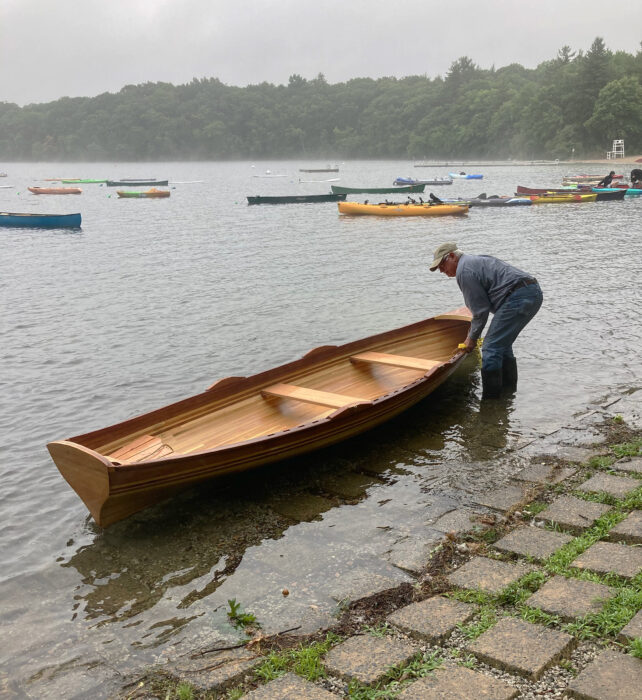 Karen Naughton
Karen NaughtonThe boat went in the water with little ceremony and without the family.
He called Newfound Woodworks and spoke to Alan. “He chuckled and said, ‘You bent it all at once, didn’t you? You have to do it very slowly.’” Steve thought Alan would suggest sending a replacement, but instead he reminded Steve that the kit “had come with some spare hunks of 2″ stock cedar. He advised me to make my own replacement out of that.” Steve ripped some new strips and started gluing them up, “a little slower this time.”
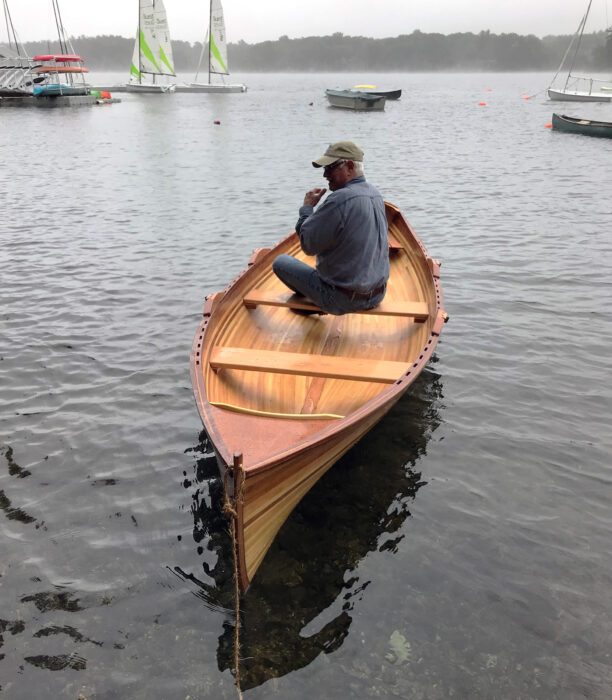 Karen Naughton
Karen NaughtonSteve didn’t try rowing during the first launching—he just wanted to make sure the boat didn’t leak.
The fiberglassing was also “exciting once in a while,” says Steve. He was new to the process and found ’glassing the inside of the hull particularly testing. “Keeping the bubbles and wrinkles out of there was challenging.” Once more, the Pre-Kit’s book and DVDs came in handy. One tip he found particularly helpful was to hold the cloth up to the gunwale with clothespins to stop it sliding down. “It sounds simple, but it was terrific,” he says, “it worked really well.”
Start to finish the project took Steve from early February 2021 to late April 2021, working about three to four hours, four to five days per week. “A lot of the time was spent waiting for glue to dry. But it’s good, it forces you to slow down and work at a measured pace.”
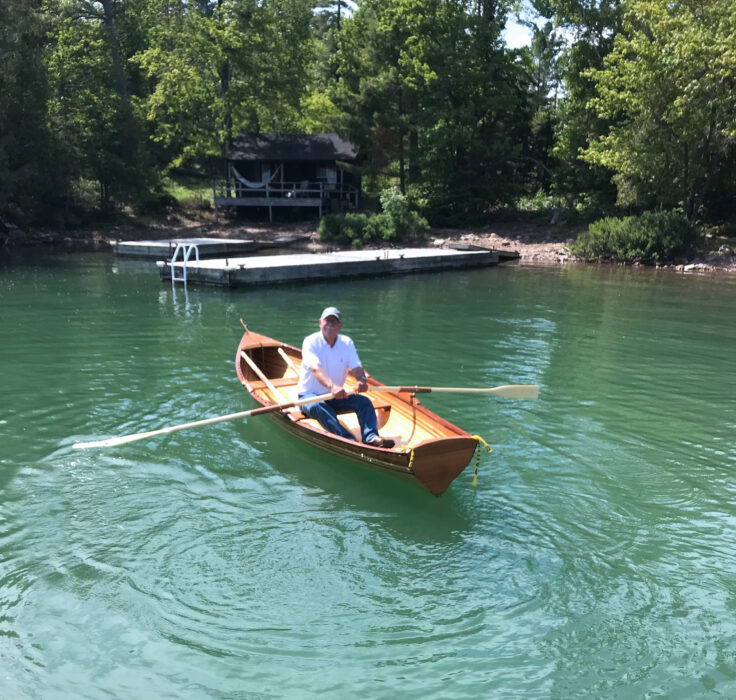 Sarah Petty
Sarah PettySteve rowed FOPA for the first time at the family camp in Ontario.
The Rangeley was launched on May 2, 2021, on Steve’s local pond. “I didn’t row it. I just put it in the water to make sure it floated, and that it floated somewhat level.” It did. Steve took the boat back to the shop, wrapped it up, and waited. The plan had been to take the boat to the family camp that July, but COVID had changed everyone’s plans, and it would be another year before the family was once again at Lake Huron and could receive the Rangeley. While he was waiting, Steve bought two pairs of oars and gave the boat a name: FOPA for each of his four grandchildren, Finn, Olivia, Parker, and Alexa.
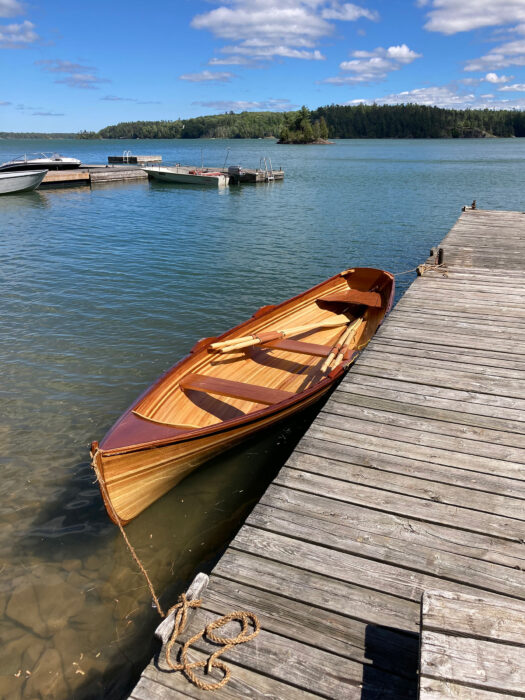 Steve Petty
Steve PettyWhen the summer skies over the North Channel are clear and its waters are calm, FOPA is not likely to spend much time idle at the dock.
In July 2022, Steve and FOPA made the trip to Ontario and the family’s camp on North Channel. Now, two summers in, Steve says everyone loves her. “She weighs around 95 lbs, is very stable, and rows like a dream.” Within the family there’s a wide range of rowing abilities, but all, young and old, enjoy taking FOPA out on the lake.
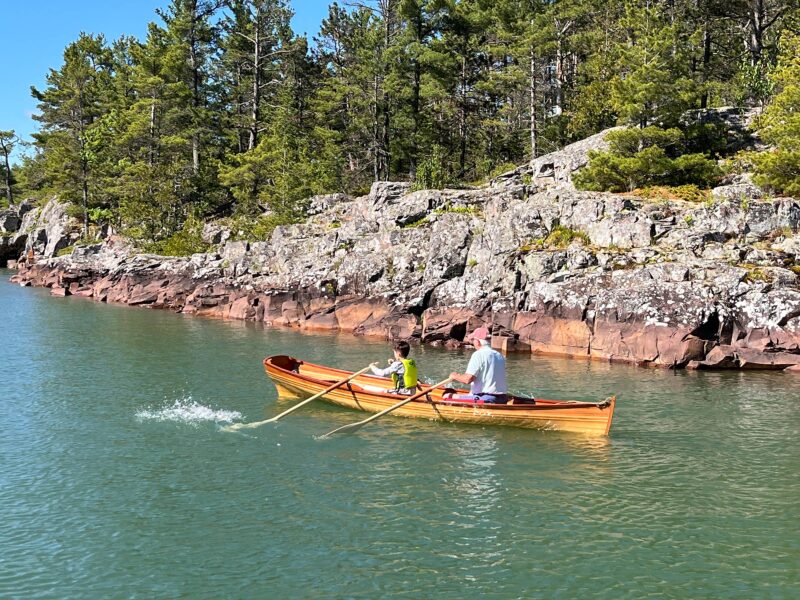 Sarah Petty
Sarah PettyOn the day FOPA arrived at the camp, Steve took his grandson, Parker, out for a row.
As for Steve, he’s thinking of his next project. He doesn’t have a boat right now, but the Charles River and many of the Great Ponds of Massachusetts are nearby, and even the lakes of Maine, New Hampshire, and Vermont are not far. He’s pretty sure he’ll build another kit but is undecided whether to go for a rowboat or a canoe. Although, he says, “I do really like the look of the Adirondack guideboat.”![]()
Jenny Bennett is managing editor of Small Boats.
Do you have a boat with an interesting story? Please email us. We’d like to hear about it and share it with other Small Boats readers
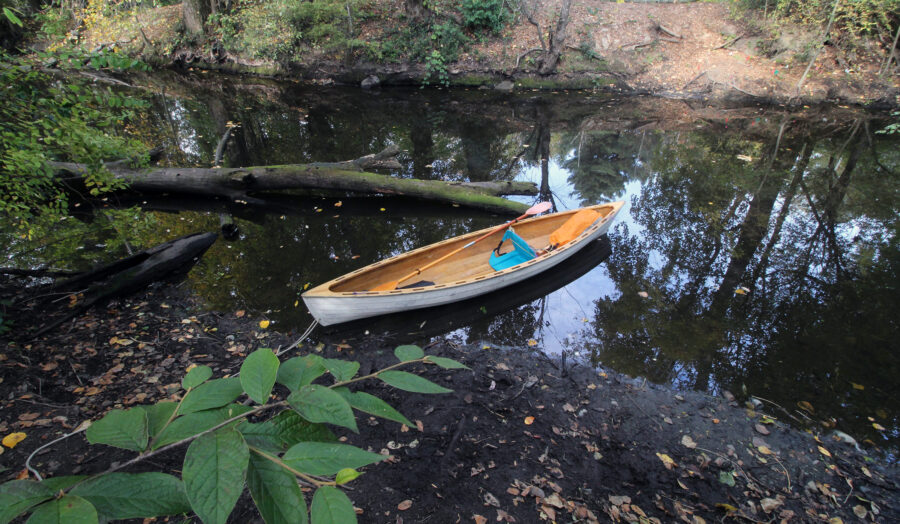

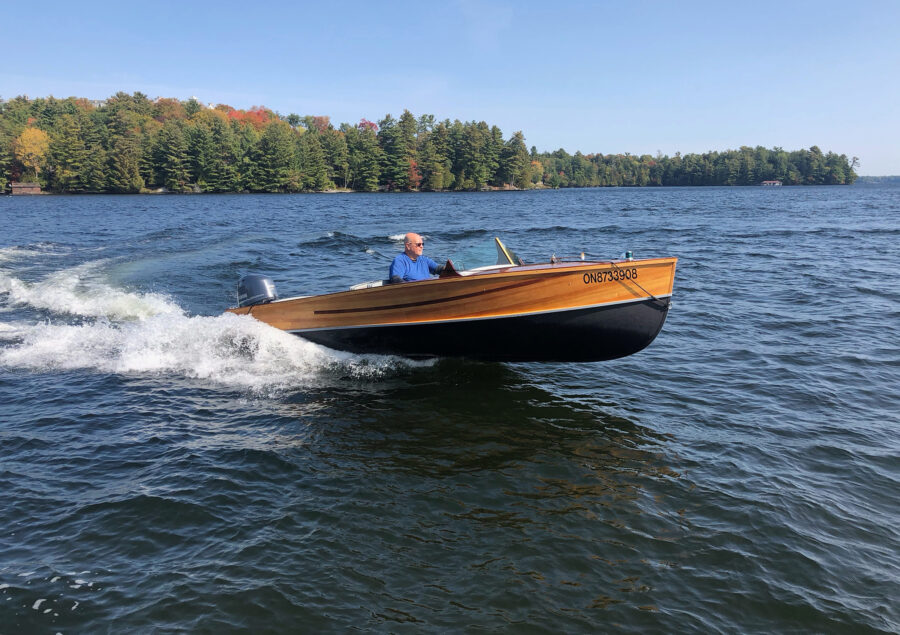
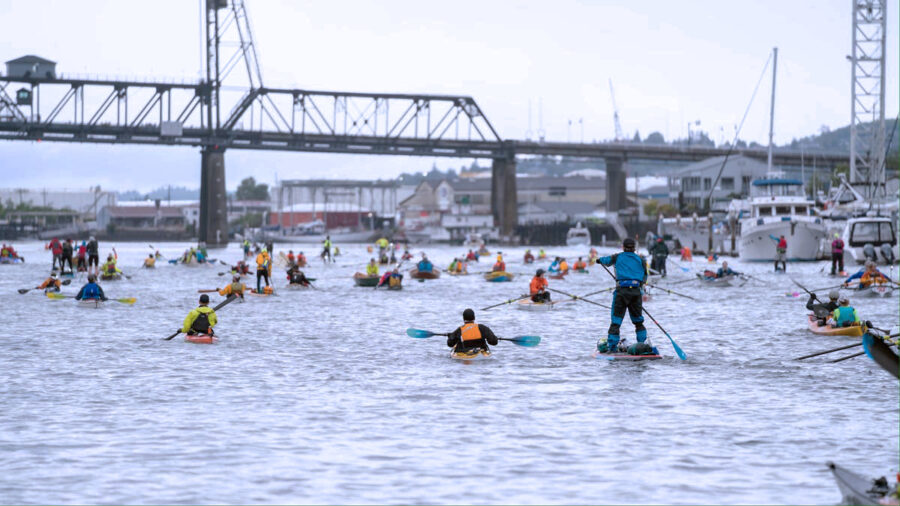
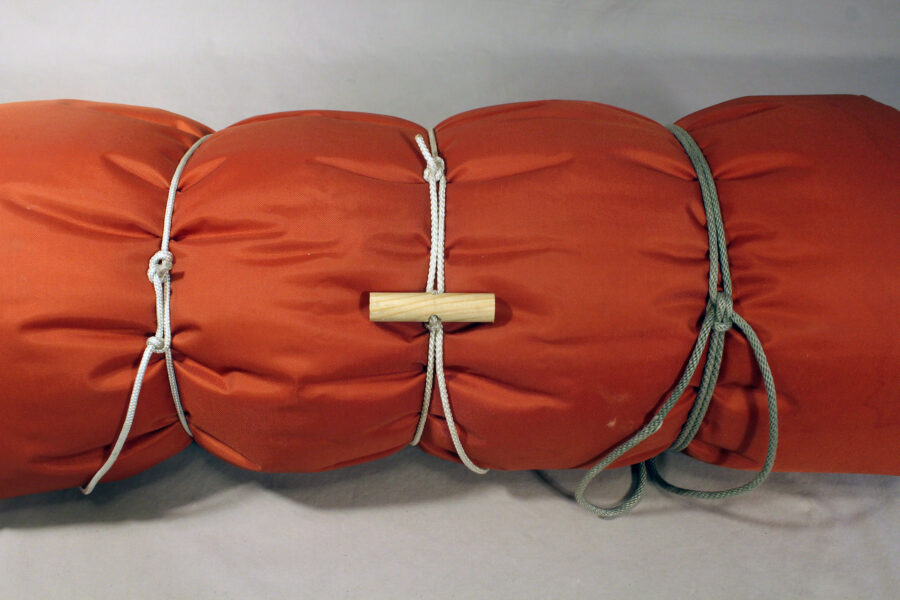
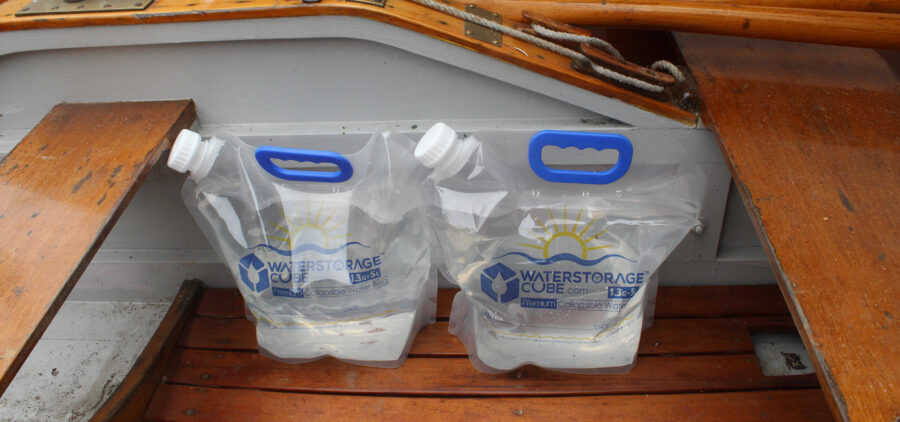
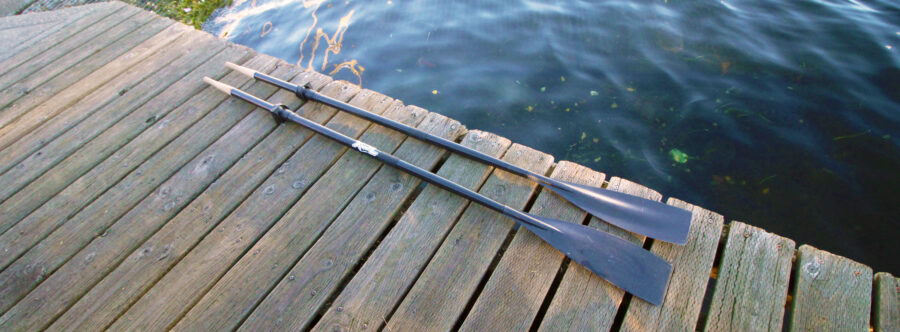
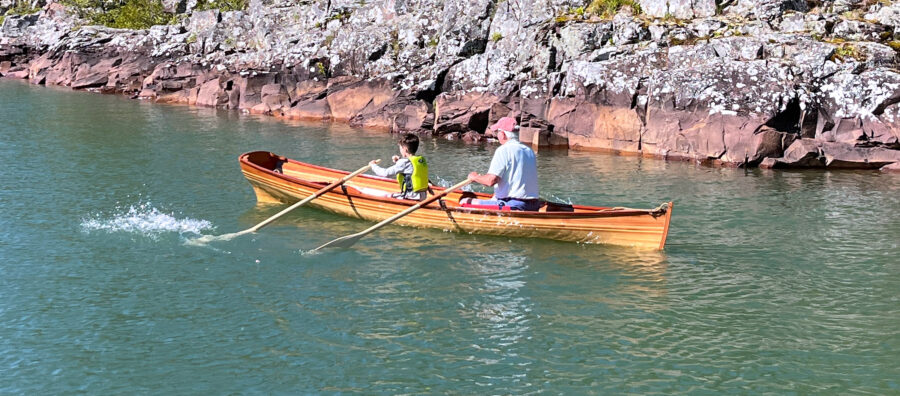

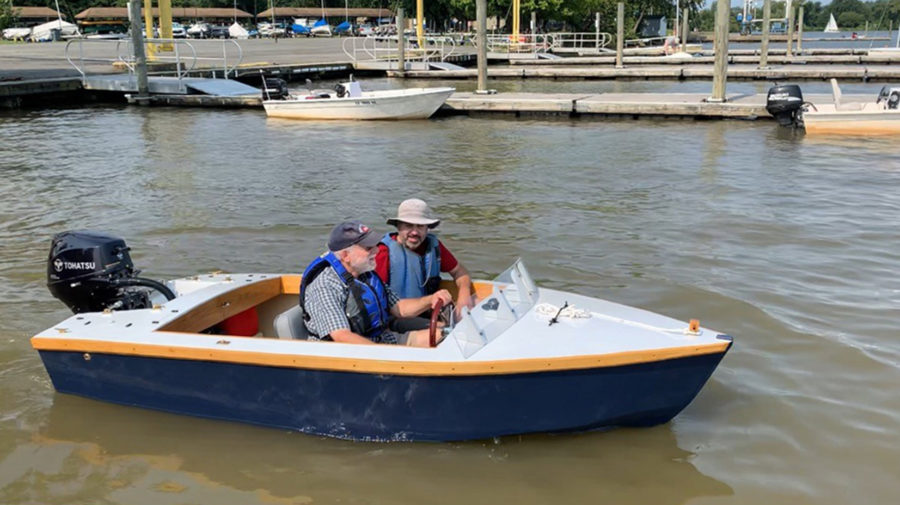
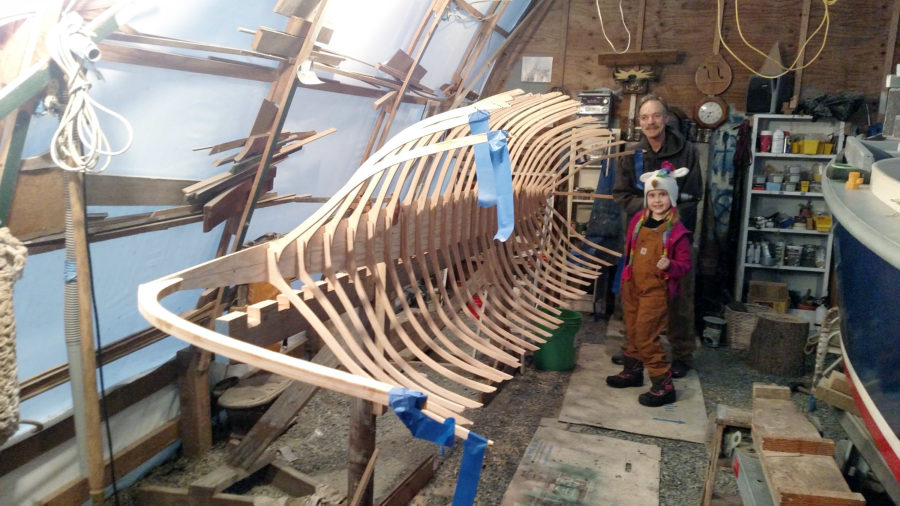
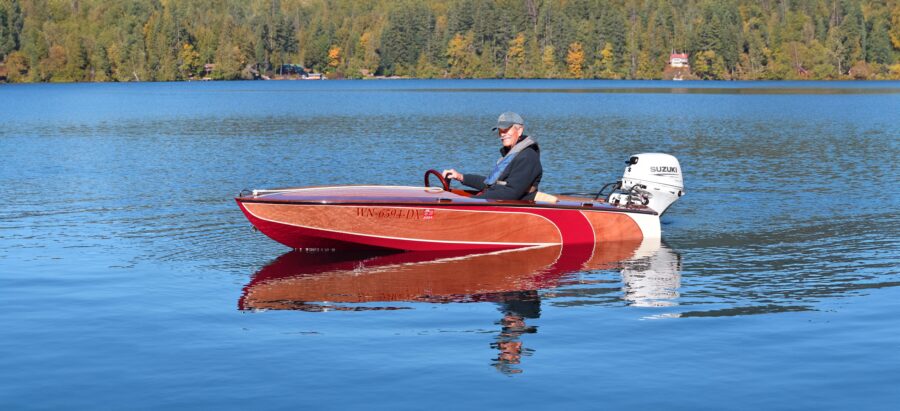
Sorry to sound like a broken record here, but again I urge the use of DRY heat for bending. A heat gun is a good tool for this. By pre-bending the slats for the stem, the problem of breakage in the laminations would be obviated. No need to bend them to an exact curvature. Bending them one at a time, the whole stack could be made ready for gluing in half an hour or so. Heating without moisture means no need to wait for them to dry out before gluing. Of course you would use your bending mould for clamping in the final layup.
For severe bends, a bending strap (the steel strapping from a lumber stack at the lumber yard works very well) helps a lot. I use a vise at one end, and a clamp at the other in order to control and manipulate the strips of wood. Securely clamping the bending strap helps force the bend into the inner wood fibers, rather than trying to stretch the outer fibers (which is sure to lead to breakage).
Grandpa Steve should wear his lifejacket, if only to set a good example.
Well said Malcolm!